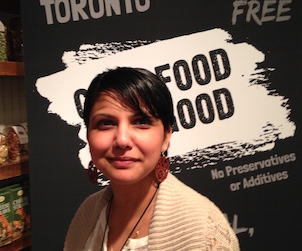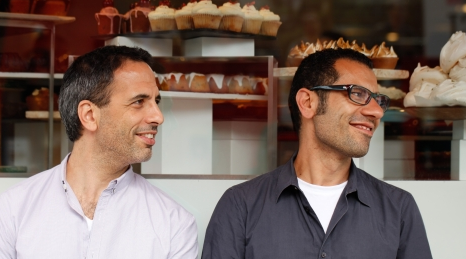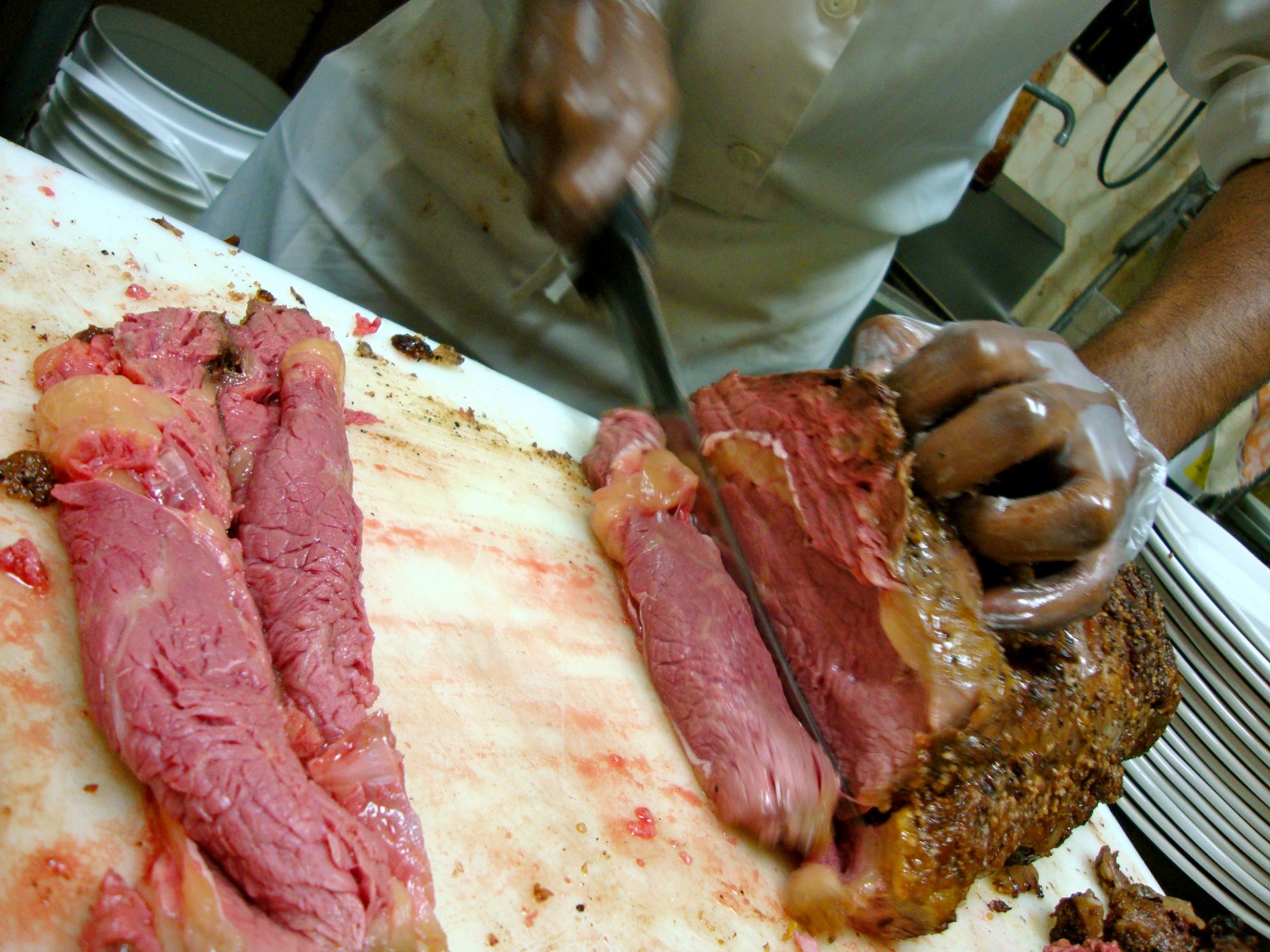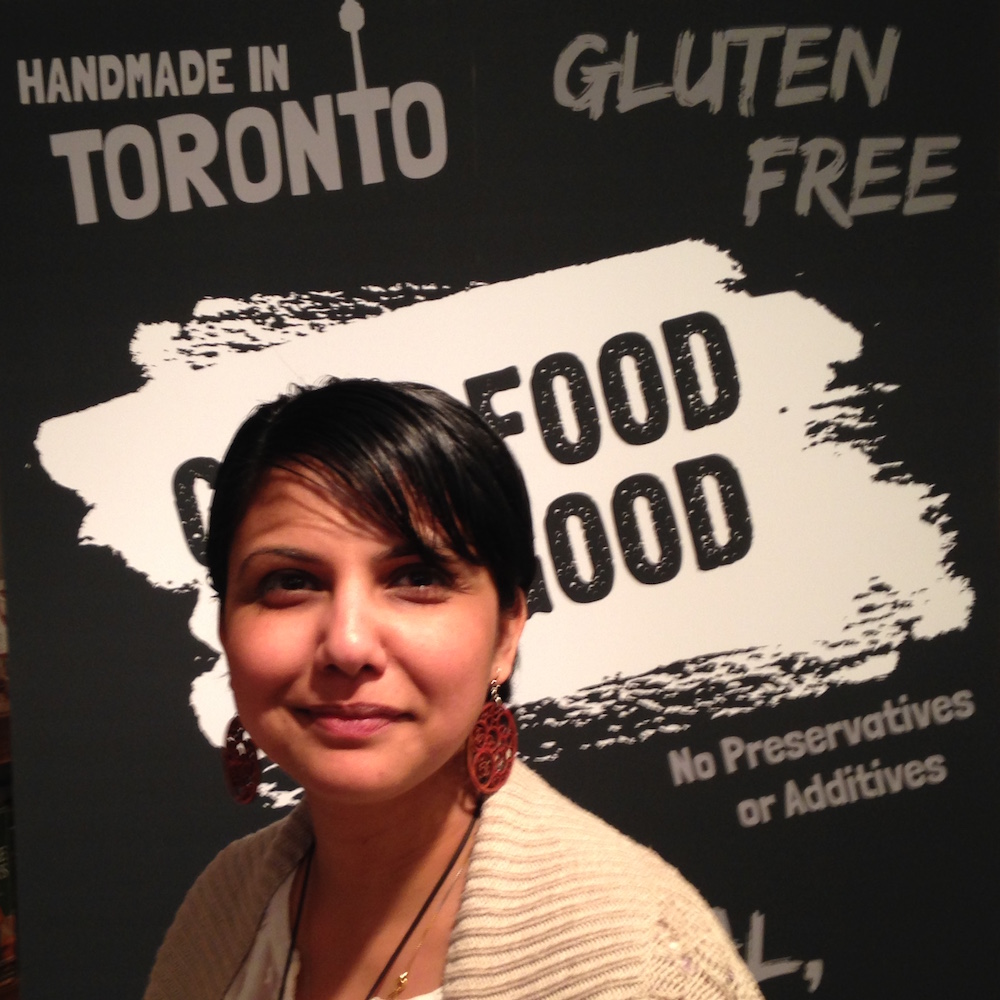 Richa Gupta was an MBA at a big industrial food company who wanted to do better. Could she take her business school education to work selling people delicious food made with natural ingredients and help make the world a better place at the same time? Apparently she could, because just a year and a bit in, her company Good Food For Good is beginning to attract notice and customers in her home town of Toronto, while it’s also making an impact in her country of birth, India. Working out of the incubator kitchen at FoodShare, Gupta makes sauces and spreads and donates a portion of proceeds to an organization that feeds hungry schoolchildren. I met Gupta at a sample tasting of her sauces and spreads at All The Best one afternoon and made arrangements to interview her for the piece below quickly after. The Interview This interview has been edited for clarity and style Good Food Revolution: Your company caught my attention in no small part because of its name. On your website (which is excellent, by the way), you use the two components from it, “Good Food” and “For Good” to explain what you do, so I thought maybe we could start by sort of repeating it? Richa Gupta: Totally. That’s the reason I’ve kept the name Good Food For Good. When I was initially talking about the idea, a lot of traditional marketers told me that I needed a “brand name” and that “good food for good” should be the tag line. But I thought, why should I have two things for people to remember? Good Food For Good: once you know what it does, you will never forget the name. GFR: Nor what it does. RG: Exactly, That’s how it started. I wondered how can I provide good food, that’s good for you, and food for people who can’t afford to eat. The idea began when I was doing my MBA and I discovered Tom’s and I just loved the whole concept of “one for one”. I was developing a business plan (that’s what you do at b-school) for a company that would help artisans by buying products from them, but I couldn’t source things the way I wanted to, so the idea never took off. Then, when I worked at General Mills I was so dissatisfied with what I discovered went into the food, I realized that Couldn’t work there and I needed to do something about it. So, I started thinking about the idea of Good Food For Good and it fit perfectly. What’s better than food fighting for food, right? You’re killing two birds with one stone. You’re making a difference on your plate and on someone else’s plate.
Richa Gupta was an MBA at a big industrial food company who wanted to do better. Could she take her business school education to work selling people delicious food made with natural ingredients and help make the world a better place at the same time? Apparently she could, because just a year and a bit in, her company Good Food For Good is beginning to attract notice and customers in her home town of Toronto, while it’s also making an impact in her country of birth, India. Working out of the incubator kitchen at FoodShare, Gupta makes sauces and spreads and donates a portion of proceeds to an organization that feeds hungry schoolchildren. I met Gupta at a sample tasting of her sauces and spreads at All The Best one afternoon and made arrangements to interview her for the piece below quickly after. The Interview This interview has been edited for clarity and style Good Food Revolution: Your company caught my attention in no small part because of its name. On your website (which is excellent, by the way), you use the two components from it, “Good Food” and “For Good” to explain what you do, so I thought maybe we could start by sort of repeating it? Richa Gupta: Totally. That’s the reason I’ve kept the name Good Food For Good. When I was initially talking about the idea, a lot of traditional marketers told me that I needed a “brand name” and that “good food for good” should be the tag line. But I thought, why should I have two things for people to remember? Good Food For Good: once you know what it does, you will never forget the name. GFR: Nor what it does. RG: Exactly, That’s how it started. I wondered how can I provide good food, that’s good for you, and food for people who can’t afford to eat. The idea began when I was doing my MBA and I discovered Tom’s and I just loved the whole concept of “one for one”. I was developing a business plan (that’s what you do at b-school) for a company that would help artisans by buying products from them, but I couldn’t source things the way I wanted to, so the idea never took off. Then, when I worked at General Mills I was so dissatisfied with what I discovered went into the food, I realized that Couldn’t work there and I needed to do something about it. So, I started thinking about the idea of Good Food For Good and it fit perfectly. What’s better than food fighting for food, right? You’re killing two birds with one stone. You’re making a difference on your plate and on someone else’s plate.  GFR: Just to be clear: the good food part is, as you advertise is fresh, local, artisanal… RG: Organic. GFR: Organic, no preservatives… RG: No preservatives: we cook very simply. I could easily can the sauces, the way most sauces are available by cooking them to death. All I would have to do is add higher acidity and cook them for an extra 40 minutes and they would be sterile. But that kills the good stuff as well as the bad. The whole thing was how can you preserve the goodness and the flavour. That’s the thing with other sauces: they’re too acidic so they add a lot of sugar and a ton of spice to counter the acidity. Or, they cook them to death. GFR: So, your sauces are much more perishable? Do they have a shorter shelf life? RG: Yes, they have a shorter shelf life. And they are more challenging to produce because I only use fresh, whole foods. So, when you are dealing fresh tomatoes, fresh onions, fresh garlic, you have to deal with increased labour costs, the availability of produce, and it makes a lot of difference on how the business works. I pretty much just cook the way I do at home and put it in a jar.
GFR: Just to be clear: the good food part is, as you advertise is fresh, local, artisanal… RG: Organic. GFR: Organic, no preservatives… RG: No preservatives: we cook very simply. I could easily can the sauces, the way most sauces are available by cooking them to death. All I would have to do is add higher acidity and cook them for an extra 40 minutes and they would be sterile. But that kills the good stuff as well as the bad. The whole thing was how can you preserve the goodness and the flavour. That’s the thing with other sauces: they’re too acidic so they add a lot of sugar and a ton of spice to counter the acidity. Or, they cook them to death. GFR: So, your sauces are much more perishable? Do they have a shorter shelf life? RG: Yes, they have a shorter shelf life. And they are more challenging to produce because I only use fresh, whole foods. So, when you are dealing fresh tomatoes, fresh onions, fresh garlic, you have to deal with increased labour costs, the availability of produce, and it makes a lot of difference on how the business works. I pretty much just cook the way I do at home and put it in a jar.  GFR: Now, I am going to guess from your Indian accent that you weren’t born in this country, or at least didn’t grow up here. RG: No. None of my growing up was here! I was born in Delhi, but I got married and moved to North America when I was 25 in 2003. I did my MBA here, but most of my other education was India. GFR: That explains your products like Tikka Masala, but what about Ancho Sauce for Enchiladas? Why does Good Food For Good sell Mexican foods? RG: I don’t make Indian foods because I am Indian! OK, well maybe. But really it was because there was nothing available in Indian sauces in the market right now that I would buy. And that’s the same reason we do Mexican. There are lots of Italian sauces that are good that are already in the market. That’s why I didn’t go for pasta sauces even though they would probably be the best seller, since everybody goes for them in North America. And, Toronto and Ontario are becoming more and more multicultural and people are interested in “world food”. GFR: So your product choices were strategic, not sentimental? RG: It was strategic! It was not about bringing my mother’s recipes to the world. That’s not the reason why I started Good Food For Good. I started it because I felt the need for it and I thought there were more people who felt like me. Actually, the first time I tasted jarred Indian food sauce was at General Mills. They were thinking of getting into the ethnic food market. I thought, oh my God this is horrible! [Laughs.]
GFR: Now, I am going to guess from your Indian accent that you weren’t born in this country, or at least didn’t grow up here. RG: No. None of my growing up was here! I was born in Delhi, but I got married and moved to North America when I was 25 in 2003. I did my MBA here, but most of my other education was India. GFR: That explains your products like Tikka Masala, but what about Ancho Sauce for Enchiladas? Why does Good Food For Good sell Mexican foods? RG: I don’t make Indian foods because I am Indian! OK, well maybe. But really it was because there was nothing available in Indian sauces in the market right now that I would buy. And that’s the same reason we do Mexican. There are lots of Italian sauces that are good that are already in the market. That’s why I didn’t go for pasta sauces even though they would probably be the best seller, since everybody goes for them in North America. And, Toronto and Ontario are becoming more and more multicultural and people are interested in “world food”. GFR: So your product choices were strategic, not sentimental? RG: It was strategic! It was not about bringing my mother’s recipes to the world. That’s not the reason why I started Good Food For Good. I started it because I felt the need for it and I thought there were more people who felt like me. Actually, the first time I tasted jarred Indian food sauce was at General Mills. They were thinking of getting into the ethnic food market. I thought, oh my God this is horrible! [Laughs.] 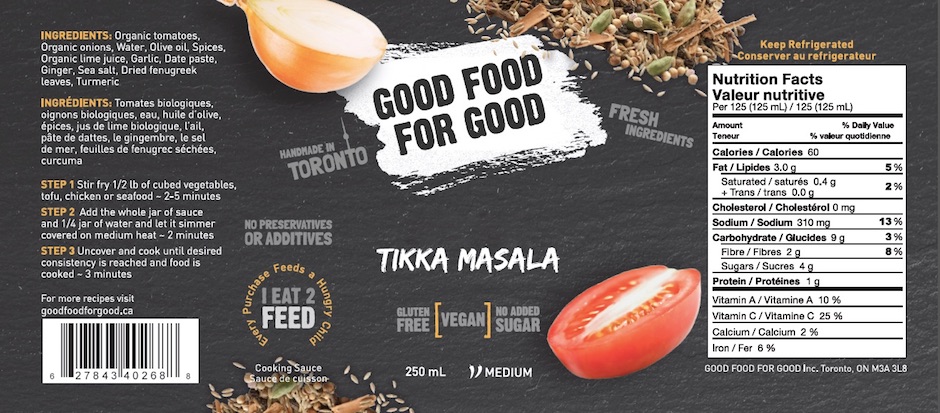 GFR: What about the “for good” part? How did you set that up and organize it? RG: It’s super simple. There are organizations around the world that are doing great jobs of feeding the hungry. All we had to is pick the organization that aligned best with what we are trying to do – they are all ready to take our money. First, we contacted the World Food Program, but they said we were too small, when you’re big enough, we’ll talk. Then, I found this organization called Akshaya Patra Foundation that feeds 1.4 million kids every day. And they serve fresh food. We went to India in January this year and they cook in the morning and take they’re small trucks to the schools where they serve the kids fresh, warms foods like rice and lentils. They make food that kids eat in that region; it’s not cooked in a factory, stored and airlifted and distributed. It’s cooked in the region’s kitchen. And for those kids it’s probably the only meal they’re going to eat that day. GFR: Wow. RG: Yeah. Once I found them, I emailed them and we started donating with every jar we sell. We give a quarter, which will buy a whole meal in India. GFR: So, you making an impact: you’re website says you’ve bought thousands of meals. Your products seem to be getting well distributed: I saw you doing samples at All The Best, it looks like you’re at Fiesta Farms, McEwan, Rowe Farms, Summerhill Market, to name a few. So, what happens when you walk into these stores and try and get them to carry Good Food For Good? RG: I try to call first and make an appointment, but really I just walk in with some product, tell them the story and so far nine out of ten people say yes.
GFR: What about the “for good” part? How did you set that up and organize it? RG: It’s super simple. There are organizations around the world that are doing great jobs of feeding the hungry. All we had to is pick the organization that aligned best with what we are trying to do – they are all ready to take our money. First, we contacted the World Food Program, but they said we were too small, when you’re big enough, we’ll talk. Then, I found this organization called Akshaya Patra Foundation that feeds 1.4 million kids every day. And they serve fresh food. We went to India in January this year and they cook in the morning and take they’re small trucks to the schools where they serve the kids fresh, warms foods like rice and lentils. They make food that kids eat in that region; it’s not cooked in a factory, stored and airlifted and distributed. It’s cooked in the region’s kitchen. And for those kids it’s probably the only meal they’re going to eat that day. GFR: Wow. RG: Yeah. Once I found them, I emailed them and we started donating with every jar we sell. We give a quarter, which will buy a whole meal in India. GFR: So, you making an impact: you’re website says you’ve bought thousands of meals. Your products seem to be getting well distributed: I saw you doing samples at All The Best, it looks like you’re at Fiesta Farms, McEwan, Rowe Farms, Summerhill Market, to name a few. So, what happens when you walk into these stores and try and get them to carry Good Food For Good? RG: I try to call first and make an appointment, but really I just walk in with some product, tell them the story and so far nine out of ten people say yes.  Malcolm Jolley is a founding editor of Good Food Revolution and Executive Director of Good Food Media, the company that publishes it. Follow him on Twitter or Facebook.
Malcolm Jolley is a founding editor of Good Food Revolution and Executive Director of Good Food Media, the company that publishes it. Follow him on Twitter or Facebook.
Richa Gupta and Good Food For Good
